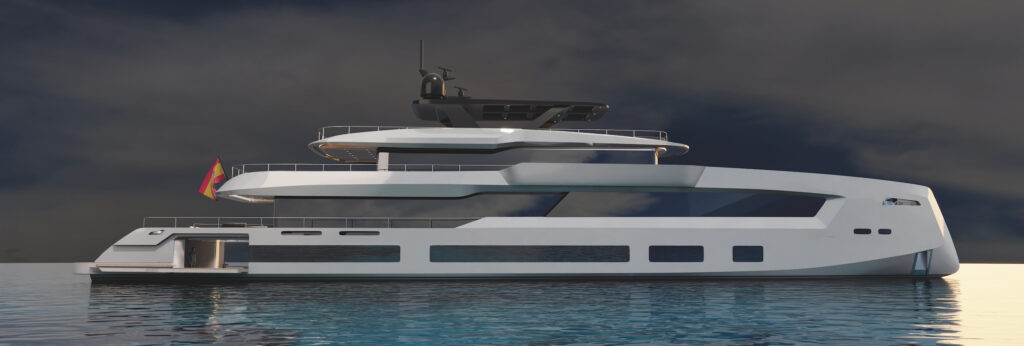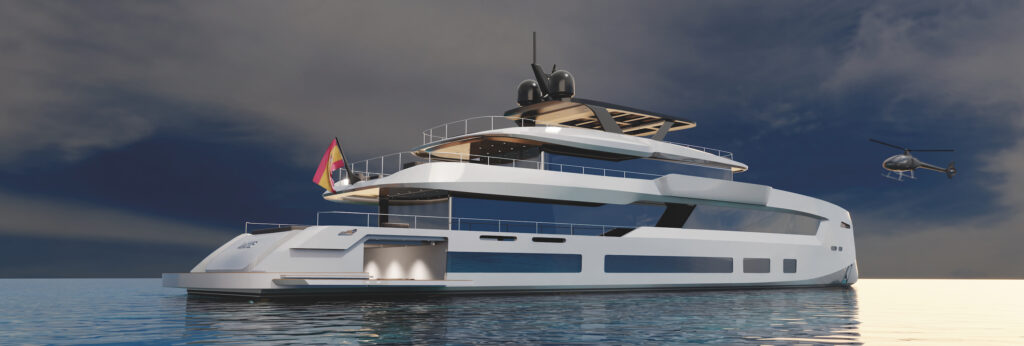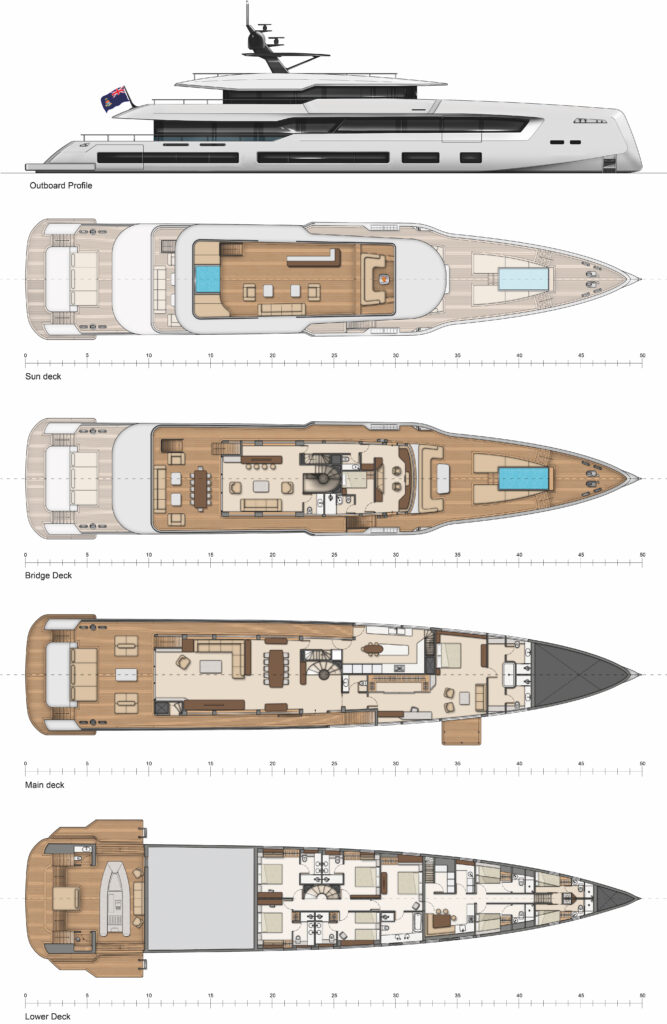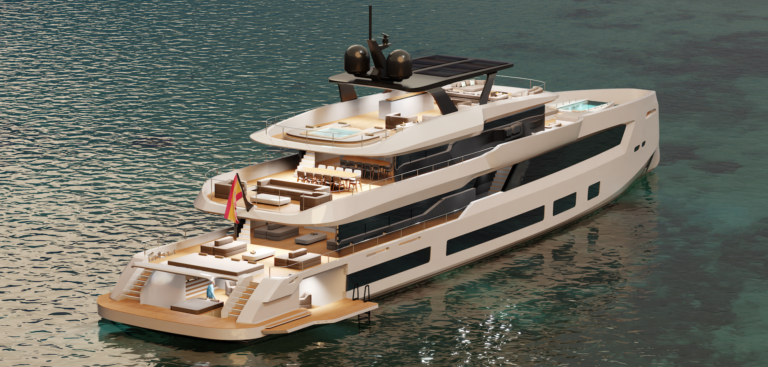A sophisticated concept from BYD Group uses a triple hybrid system to offer zero-emission sailing with no impact on the superyacht experience
Plenty of modern ship design is geared toward an idealized maritime future. But a new concept by BYD Group and Atollvic Shipyard extends such forward thinking to the high-end world of luxury yachting. According to BYD co-founder and CEO Tià Simó, the 50m yacht concept outlines “what we believe needs to be the future of super- and mega-yachts”.
“[These vessels must strive] to be environmentally friendly and try to reduce emissions to the minimum possible – without, of course, losing comfort,” he says. “That’s the reason why we have proposed a triple hybrid system.”
This propulsion system features electric motors and consumers, battery banks for storage and buffers, hydrogen tanks and fuel cells for electricity generation from green hydrogen, and diesel generators for occasions when batteries or hydrogen are not available.
The brief for the project, explains Simó, was to have a <500GT yacht capable of cruising with no emissions where possible, but not restricted from traveling anywhere else. The design needed capacity for 12 passengers and nine crew, and all the service and comfort provisions that typify a superyacht. And instead of placing limitations on the design for the vessel, Simó and his team regarded emissions reduction as a complementary design focus.
“Super luxury and zero emissions are not opposite concepts,” Simó asserts. “In fact, we believe that they should go together all the time – super luxury [vessels are] where there are the resources to make things better and more sustainable.”

Triple decker
Initial investigations explored the possibility of including only hydrogen and electric power.
“However, we found that there are many limitations at the current time regarding the supply of green hydrogen around the world,” Simó says, “so we decided that we needed to have diesel-powered generators too, so that we were not limiting the capabilities of the yacht due to a scarce power source. Of course, the battery banks and hydrogen will be used when they are available and will be the principal power source – but if these are not available, the yacht will be able to carry out normal operations under diesel power.
“By the time the yacht becomes a reality, there will be many more hydrogen stations around the world to service it,” he adds. “We will include an electrolyzer and compressor on board, so we will be able to generate hydrogen at the port with electricity from the shore.”
The yacht’s operational modes include sailing under diesel power, fully electric (with range dictated by the onboard battery pack), using hydrogen-electric power, or via a combination of the above systems. All power requirements for the vessel, including hotel electronics, are met by the powerplant via the ship’s distribution architecture. This, Simó explains, increases the efficiency of the vessel’s power systems.
Propulsion thrust is via electric motors on azimuthal pods, increasing maneuverability and optimizing the thrust line around the hull.
Maintaining luxury
The yacht propulsion system, Simó explains, will be arranged between the bilge and the engine room, avoiding any architectural impact on the ship’s superstructure.
“Only the added solar panels will sit on the superstructure,” he reveals. “We are also investigating using solar panel glazing.”

Remarkably, the rest of the cutting-edge propulsion design can be accommodated in traditional spaces.
“Diesel tanks, hydrogen tanks and batteries will be laid on the bilge,” Simó says. “There are the electric motors on the azimuthal pods, and the generators will be arranged in the machinery space with the rest of the equipment such as water makers, air-conditioning compressors, hydraulic units and so on.
“A benefit of this system is that we do not need to have a shaft,” he continues. “This means the generators and other equipment can be placed anywhere – although we prefer to have all the machinery concentrated in a dedicated machinery space, as low as possible and in an area with good volume, so as to enable easy operation.”
Operation without the use of diesel power is clearly the goal of the yacht’s design, and while Simó sees a time when onboard gensets won’t be necessary, they remain – for now – a requirement in ensuring vessel operation can continue, regardless of conditions, local energy infrastructure, or location.
“Currently, we need diesel to be able to operate in many areas, as [hydrogen and/or electric charging availability] is not widespread,” he explains. “But in 2025, there’s a big projected expansion that will grow exponentially until 2030. Our yacht is a luxury item and cannot be without energy to operate in any area – for example, in remote Caribbean islands, or in the Pacific!”
For now, then, there remains a need to balance and optimize the different propulsion systems and fuel types. BYD’s design manages to do so without impacting the vessel superstructure – and, therefore, the high-end luxury experience – of a super- or mega-yacht platform. The project is currently on the lookout for a buyer to advance the concept vessel design to reality.
TECH SPEC: 50M YACHT CONCEPT
- Maximum speed: 14.5kts
- Cruising speed: 12.5kts
- Eco speed: 9kts
- Propulsion power: 2 x 600kW

(Images: BYD Group)



